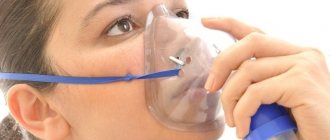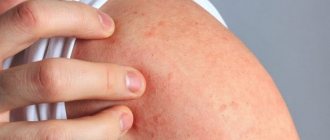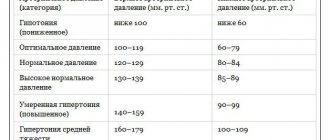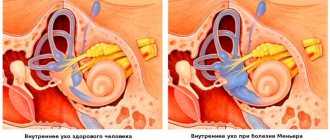Types and types of human breathing - general meanings
Human breathing consists of several types - external and internal (tissue).
External respiration is the exchange of gases between the external environment and the lungs, lungs and blood. Oxygen enters the lungs, then into the blood, after which the blood distributes oxygen throughout the body, nourishing the tissues. This is already the stage of tissue respiration.
Pulmonary ventilation (that is, external breathing) occurs due to the movements of the chest. When we inhale, we take in oxygen, and when we exhale, we release carbon dioxide. A person most often does not pay attention to his breathing, but this is a very complex physiological process.
When you inhale, the respiratory muscles contract, the chest cavity expands, the lungs stretch, the alveolar cavities (this is the part of the lungs that is responsible for breathing) expand and oxygen enters the lungs due to the pressure difference between the alveolar and atmospheric air. Then the contraction of the respiratory muscles stops, the lungs decrease (due to their elasticity), the air pressure in the alveoli becomes higher than atmospheric pressure and exhalation occurs.
Breathing also occurs through the skin and digestive tract. But this is only 1-2% of the total gas exchange.
How does the respiratory system work? Just something complicated
Evolutionarily, it turned out that oxygen is necessary for human life. How to deliver it to organs and tissues? Today we are talking about the respiratory system and the features of its functioning.
How does it all work?
The respiratory system is represented by a number of anatomical structures. They are classified into the respiratory tract (upper and lower) and the respiratory organs. The upper respiratory tract is the nasal cavity, nasal and oral part of the pharynx. The lower ones are the larynx, trachea and bronchi. The respiratory organs include the lungs. In everyday life and in fact, when speaking about the human respiratory organs, we may mean individual anatomical formations and the respiratory tract. For example, the larynx and trachea are not only part of the lower respiratory tract, but also independent organs.
Air does not enter the lungs on its own; it must be “drawn in”, which is what happens during inhalation. The diaphragm, external intercostal and intercartilaginous muscles are involved in this. During inhalation, the diaphragm flattens somewhat, the chest expands, which ensures forward movement of air into the respiratory tract and lungs.
Having passed all the way from the nostrils to the final branches of the bronchial tree, the air enters closed “bubbles” - alveoli. They constitute the main functional part of the lungs.
Read on topic: Breathe easily and cleanly! The whole truth about bronchitis
But how does oxygen reach its final targets - organs? The outside of the alveolus is covered with a network of small blood vessels through which blood continuously flows. One of the types of blood cells is red blood cells filled with the substance hemoglobin. It is he who carries out the transport of gases in the body.
Oxygen from the alveolar air “leaks” into the blood, where it is “captured” by hemoglobin. At the same time, carbon dioxide, a product of cell activity, enters the alveoli. Red blood cells enriched with oxygen carry it throughout the body, and carbon dioxide is released into the external environment by exhalation. Unlike inhalation, which is always an active process, exhalation is passive, but can also be active if necessary. Active exhalation also involves muscles - the internal intercostal muscles and the muscles of the abdominal wall.
Negative intrapleural pressure plays a certain role in the breathing process.
The human breathing process is complex and regulated in various ways. Let's look at some of them.
The respiratory center, a collection of nerve cells in the medulla oblongata, is responsible for breathing.
Read on the topic: What will help with a cough: badger fat or mustard in socks? We treat children correctly
The flow of nerve impulses goes to the muscles responsible for inhalation, giving them a certain range of movements. The respiratory center has automaticity: approximately once every four seconds, excitation occurs here, stimulating the muscles that provide inhalation. Then it gives way to inhibition, the inhalation muscles relax - exhalation occurs. The rhythmic change of these states is an innate property.
The frequency and depth of breathing depends on the intensity of oxidation processes occurring in the body. Physical activity leads to an increase in oxygen absorption and an increase in the concentration of carbon dioxide in tissues and blood. The latter activates the respiratory center through the blood, and, as a result, the contraction of the respiratory muscles increases. This allows you to quickly remove excess carbon dioxide and replenish the lack of oxygen.
Not good for the body: what harms our respiratory system?
Man was formed in conditions with a certain oxygen content. However, for an optimal breathing process, not only its presence is necessary, but also certain characteristics of the inhaled air. They are provided by our respiratory tract, so the lungs - normally - receive purified, humidified and warmed air.
Any of these parameters can be affected by environmental changes.
Purity. Dust of various origins, car exhaust gases, emissions of harmful substances into the atmosphere, tobacco smoke, animal hair, plant pollen... The list could be continued.
Humidity. Surely many people are familiar with the feeling of dryness and sore throat indoors during the winter season, especially in the morning. The reason is simple to the point of banality: heating in apartments and houses dries out the air, which then dries out the mucous membranes of the respiratory tract. As a result, their susceptibility to infection increases.
Read the material on the topic: What is the difference between acute respiratory viral infections and acute respiratory infections?
Low temperature. It is recommended to breathe through the nose rather than through the mouth for a reason: in addition to cleansing and moisturizing, the nasal mucosa warms the air passing in transit.
Other factors that can harm our respiratory organs include numerous infections. ARVI, bacteria, fungi - all these representatives of the microcosm are capable of causing various diseases.
When it's hard to breathe. What do the statistics say?
Pneumonia, acute laryngitis, tracheitis and bronchitis. According to the Russian Ministry of Health, the most common diseases among adults are related to the respiratory system.
Bronchial asthma, chronic obstructive pulmonary disease (COPD), cancer and pulmonary tuberculosis remain relevant.
Read material on the topic: What is chronic obstructive pulmonary disease?
And above us there are kilometers of water, and whales are beating their tails above us...
How much air does a person inhale per day?
Let's do the math. Normally, at rest, the volume of air inhaled or exhaled by an adult during one respiratory cycle is 500 ml, and his respiratory rate is from 16 to 20 (during sleep - up to 12). Thus, at rest, a person inhales 8 liters of air per minute, and during the day - about 11,500 liters (adjusted for the breathing rate during sleep - correspondingly less).
How long can a person not breathe?
The answer to this question depends on many factors. Is the person at rest or moving? What is the ambient temperature? Etc.
So, how long can a person go without breathing? The fluctuation range is from less than 1 minute to several minutes. One of the world records belongs to the Danish diver Stig Severinsen - 22 minutes. True, before his attempt, he actively breathed pure oxygen for almost 20 minutes. The body tissues were enriched with this gas and at the same time the carbon dioxide content decreased.
Not only oxygen deficiency is critical, but also excess carbon dioxide. When the body is unable to get rid of carbon dioxide through the lungs, its content in the blood begins to increase. Possible disorientation, muscle spasms, rapid heartbeat, loss of consciousness and death.
What happens if you hold your breath often?
Based on what was described above, depending on the frequency and duration of delays, carbon dioxide can gradually accumulate in the body. When it goes beyond the normal limits and this condition persists for a relatively long time, detrimental effects on health are possible.
Usually, after a noticeable holding of breath and a natural increase in the level of carbon dioxide, a deepening of breathing is observed: the body removes its excess and strives to obtain oxygen.
Therapeutic breathing
For the benefit of slimness
There are methods for losing weight based on different breathing methods - for example, bodyflex, oxysize.
Is it possible to lose weight by eating soups? The therapist and nutritionist at the Expert Stavropol Clinic, Valentina Sergeevna Maltseva, tells
One example is “abdominal” breathing, i.e. When you inhale, the stomach protrudes, and when you exhale, it retracts.
Scientists have conflicting opinions about weight loss using breathing exercises alone. In addition, it must be remembered that inhaling and exhaling too deeply can upset the balance between oxygen and carbon dioxide. This may cause dizziness and some may faint.
Therefore, before starting this practice, you should consult a doctor, including and especially if you have any health problems.
Inhale, exhale, rest
Excited? Are you nervous? “You need to take a deep breath and calm down.” Sounds familiar? Or maybe someone gave you this advice.
As it turned out, this technique not only “works”, but also has a material basis. Scientists have been able to establish (though only in mice) that the brain contains nerve cells connected both to areas that regulate breathing and those that analyze the psychological state.
The scheme works something like this. When the body is emotionally aroused, the detected cells transmit signals to neurons that increase breathing. However, as it turned out, the system also works in the opposite direction. In other words, if you start breathing more often, the brain can become excited. This suggests why deep, slow breathing can be soothing.
How to breathe to fall asleep quickly?
There is a technique based on the practices of yoga. It was developed by Dr. Andrew Weil. The technique is called “4-7-8” and is performed as follows:
- place the tip of your tongue on the mucous membrane just behind the upper front teeth (on the inside) and keep it there throughout the entire exercise;
- exhale completely through your mouth with a whistling sound;
- close your mouth and calmly inhale through your nose, counting to yourself to four;
- hold your breath, mentally counting to seven;
- Exhale completely through your mouth, making a whistling sound, for a count of eight.
It's one breath. Now repeat the cycle three more times.
If you have trouble holding your breath, you can speed up the exercise, but stick to a 4:7:8 ratio for the three phases. Do the exercise twice a day.
Related material: Is insomnia a disease or not?
The method refers to alternative methods of treatment and may not have been tested in terms of the principles of evidence-based medicine.
Keeping healthy
How to keep your respiratory system healthy? Taking into account the adverse factors that may affect her condition, sufficient physical activity is advisable - ideally in the fresh air; regular ventilation of premises; air humidification; getting rid of bad habits (smoking); use of personal protective equipment (masks, respirators) during work associated with occupational hazards.
Prevention of respiratory infections is important, as well as timely treatment of any respiratory diseases.
It is imperative to undergo scheduled medical examinations and medical examinations with fluorography performed at the frequency prescribed by them.
Text: Enver Aliyev
Other
Breathing pattern
If you go to a general practitioner, he will definitely examine your respiratory system. He will look at how your chest moves and use a stethoscope to listen to how the air moves inside your lungs.
Breathing is produced by contraction of the diaphragmatic, intercostal and abdominal muscles. Depending on which muscles work the hardest, there are several types of breathing: chest, abdominal and mixed.
A person can live without oxygen for 5-7 minutes. After this time, he loses consciousness, irreversible changes occur in the brain and ultimately death occurs.
Physiology of human respiration
The Earth's atmosphere consists of 99.9% air, water vapor, natural (volcanoes) and industrial gases, and solid particles. As a result of natural factors of the Earth and human life processes, the composition of the atmosphere in a particular region of the planet may undergo minor changes. One of the main components of the atmosphere is air. Air is a mixture of gases, the main components of which are: Nitrogen (N2) – 78%; Oxygen (O2) – 21%; Carbon dioxide (CO2) – 0.03%; Inert gases and other substances – up to 1%. The air also contains small amounts of hydrogen, nitrogen oxide, ozone, hydrogen sulfide, water vapor, inert gases: argon, neon, helium, argon, krypton, xenon, radon, as well as dust and microorganisms.
General information about human respiratory physiology
The human respiratory system supplies oxygen to the body and removes carbon dioxide.
Transport of gases and other substances necessary for the body is ensured through the circulatory system.
The exchange of O2 and CO2 between the body and the environment occurs through a number of sequential processes:
- Pulmonary ventilation is the exchange of gases between the environment and the lungs.
- Pulmonary respiration is the exchange of gases between the alveoli of the lungs and the blood.
- Internal (tissue) respiration is the exchange of gases between the blood and body tissues.
The respiratory system is a set of organs and tissues that provide pulmonary ventilation and pulmonary respiration. The respiratory system consists of the airways and the lungs themselves.
Airways include:
The air is inhaled by a person, it enters the nose and nasal cavity. The nasal cavity contains olfactory receptors, with the help of which we distinguish odors. There is also hair in the nasal cavity, designed to trap dust particles coming along with air from the atmosphere.
Air passing through the nose and nasal cavity enters the nasopharynx. The nasopharynx is covered with a mucous membrane enriched with blood vessels, which heats and humidifies the air.
The trachea begins at the lower end of the larynx and descends into the chest cavity where it divides into the left and right bronchi. Entering the lungs, the bronchi gradually divide into smaller and smaller tubes - bronchioles, the smallest of which are the last element of the airways.
The smallest structural element of the lung is the lobule, which consists of the terminal bronchiole and the alveolar sac. The walls of the pulmonary bronchiole and the alveolar sac form the alveoli.
The lungs (pulmonary lobules) consist of: terminal bronchioles; alveolar sacs; pulmonary arteries; capillaries; veins of the pulmonary circulation.
Air passing through the bronchi and bronchioles fills a large number of alveoli - pulmonary vesicles in which gas exchange occurs between the blood and alveolar air. The walls of the alveoli consist of a thin film that contains a large number of elastic fibers.
With the help of which the alveolar walls can expand, thereby increasing the volume of the alveoli. The diameter of each alveoli is about 0.2 mm. And its surface area is about 0.125 mm. There are about 700 million alveoli in the lungs of an adult. That is, their total surface area is about 90 m2.
Thus, the respiratory surface is 60-70 times greater than the surface of human skin. With a deep breath, the alveoli stretch, and the respiratory surface reaches 250 m2, exceeding the surface of the body by more than 125 times.
The process of gas exchange during breathing
The essence of the gas exchange process is the transition of oxygen from alveolar air to venous blood, which circulates through the pulmonary capillaries (oxygen absorption), and the transition of carbon dioxide from venous blood to alveolar air (carbon dioxide release).
This exchange passes through the thin walls of the pulmonary capillaries according to the laws of diffusion, due to the difference in the partial pressures of gases in the alveoli and blood.
Oxygen-enriched blood from the lungs is distributed throughout the circulatory system, giving oxygen to the tissues for enrichment and taking carbon dioxide from them. Oxygen entering the blood is delivered to all cells of the body. Oxidative processes important for life occur in cells. Giving oxygen to the cells, the blood captures carbon dioxide and delivers them to the alveoli. This process is internal, or tissue respiration.
Basic parameters of the breathing process
The main parameters characterizing the human breathing process are:
- vital capacity of the lungs;
- respiratory dead space;
- breathing rate;
- pulmonary ventilation;
- oxygen consumption dose.
The vital capacity of the lungs is the maximum amount of air (l) that a person can inhale after exhaling as deeply as possible. This indicator is measured by a device called a spirometer. The normal vital capacity of an adult's lungs is approximately 3.5 liters.
A trained person involved in sports has a vital lung capacity of 4.7-5 liters.
The total volume of a person's lungs consists of vital capacity and residual volume. Residual volume is the amount of air that always remains in a person’s lungs after maximum exhalation. This volume is 1.5 liters and a person can never remove it from the respiratory system.
As can be seen from the diagram, after a quiet inhalation, there are 3.5 liters of air in a person’s lungs, and after a quiet exhalation, only 3 liters of air remain. Thus, when breathing in a calm state, a person uses only 0.5 liters of air with each breath, which is called respiratory.
After a calm inhalation, if desired, a person can extend the inhalation and inhale an additional 1.5 liters of air. This air is called extra air. After a calm exhalation, a person can also exhale another 1.5 liters of air from the lungs. This air is called spare or reserve air.
Thus, the vital capacity of the lungs consists of the sum of the respiratory, additional and reserve volumes of air.
When designing isolating devices with a closed breathing cycle, which use containers for preparing and storing the respiratory mixture (breathing bags), it must be taken into account that their volume must be no less than the maximum vital capacity of the human lungs. Therefore, modern isolation devices use breathing bags that have a volume of 4.5-5 liters, based on the assumption that well-physically developed people can work in them.
During exhalation, not all exhaled air leaves the human body into the environment. Some of the air remains in the nasal cavity, larynx, trachea and bronchi. This part of the air does not participate in the gas exchange process, and the space it occupies is called dead space.
The air in the dead space contains a low concentration of oxygen and is saturated with carbon dioxide. When inhaling, the air of the dead space, together with the air inhaled, enters the human lungs, adversely affecting the breathing process. Therefore, dead space is also sometimes called harmful space. The volume of dead space in an adult is approximately 140 ml.
Each isolation device also has its own dead space, which in general is attached to the dead space of the human respiratory system. The dead space of isolation devices contains a mask and breathing hoses. The space between the mask and the rescuer's face (respiratory organs) is called the under-mask space, it is also dead space.
Pulmonary ventilation (l/min.) – The amount of air inhaled by a person in one minute.
Respiratory rate is the number of cycles (inhalation-exhalation) occurring in one minute. The respiratory rate is not a constant value and depends on many factors.
Respiration rate depending on a person’s age
Depending on the age of the person, the respiratory rate changes and is:
for newly born babies – 60 breaths/min.
in one-year-old infants – 50 breaths/min.
for five-year-old children – 25 breaths/min.
in 15-year-old adolescents – 12-18 breaths/min.
As a person ages, breathing rate does not change significantly. However, it should be noted that in a physically well-developed person, the respiratory rate decreases to 6-8 breaths/min.
When performing work with physical activity, physical and chemical processes in the human body accelerate and the need for more oxygen increases. According to this, the respiratory rate increases, with significant load it can reach 40 breaths per minute.
However, it should be remembered that the vital volume of the lungs is fully used only at a respiratory rate of 15-20 breaths/min. As the breathing rate increases, the ability to use the full capacity of the lungs decreases. Breathing becomes shallow.
At a respiratory rate of 30 breaths/min., the lung capacity is used only by 2/3, and at 60 breaths/min. only 1/4. The amount of oxygen absorbed by a person from the air when breathing per unit time is called the dose of oxygen consumption. The dose of oxygen consumption by a person is not constant and depends on the respiratory rate and pulmonary ventilation.
With an increase in physical activity on the human body, the respiratory rate and pulmonary ventilation increase. Accordingly, the dose of oxygen consumption increases and the concentration of carbon dioxide in the exhaled air increases. An interesting property of the body is that when inhaling air through the nose, 25% more oxygen enters the body than when inhaling through the mouth.
Material from the site fireman.club
physiology breathing
Basic types of breathing
Most often, people don't pay attention to how they breathe. And experts distinguish 3 types of breathing:
- Chest
- mainly characteristic of women. Occurs due to contraction of the intercostal muscles. The chest cavity expands in the anterior, posterior and lateral directions. And the lower part of the lungs sometimes suffers from insufficient ventilation. - Abdominal
- this type of breathing is more often used by men. This is done using the diaphragm. Expansion of the chest cavity occurs primarily in an upright position, which may cause a lack of oxygen in the upper part of the lungs. - Mixed
- with this type of breathing, the lungs are completely filled with oxygen and expand evenly in all directions. It is carried out by contracting the intercostal muscles and the diaphragm.
The type of breathing also depends on age, climate and other factors influencing the internal and external environment.
Changes in breathing pattern
It happens that the type of breathing changes. This happens for a number of reasons.
For example, in women this may be associated with rib fractures or inflammation of the pleura.
The body tries to help itself and reduce pain if it is present when inhaling or exhaling. This uses additional muscles.
If a person is sick for a long time and coughs often, then his upper abdominal muscles become denser. With chronic problems, the muscles that are located in the area of the collarbones and chest become enlarged.
You can also change your breathing type consciously for preventive purposes. The most correct breathing is abdominal breathing. Look at how children breathe - you can hardly hear them and only the stomach moves a little. This is how nature intended it and you need to make sure that as an adult you continue to breathe correctly.
If it’s difficult to control this every second, then try doing breathing exercises. There are many different techniques, but the technique of the Russian scientist Buteyko is recognized as the most effective. He developed a system that helped him cope with his chronic illness, and then heal many people. Its essence is that you need to breathe calmly and superficially. This is contrary to many teachings that teach deep and frequent breaths. But it was this technique that helped a huge number of people.
You should breathe through your nose, calmly and relaxed. But there is no need to allow a lack of air. And deep breathing provokes hyperventilation of the lungs, which leads to many diseases (for example, asthma and hypertension). And proper breathing prevents frequent colds, improves skin condition and gets rid of excess weight.
The breathing process in numbers. The importance of the airways
In the previous article you could read about the structure of the respiratory muscles and the mechanism of inhalation and exhalation. In this article you will learn: what are the lung volumes, what is dead space, as well as the importance of the airways.
I don’t like numbers, but I respect them. When it is necessary to create fog, numbers are irreplaceable, especially when a person does not know what to compare them with. But even when you need to objectively demonstrate, explain, and not “assure” something, numbers are also irreplaceable. Because the numbers are easy to check...
Lung volumes
It is clear that the volume of inhalation and exhalation can be expressed by some digital indicators. And here, too, there are several interesting, but little-known facts, the knowledge of which we will need in the future.
During quiet breathing, a person inhales and exhales about 500 ml (from 300 to 800 ml) of air; this volume of air is called tidal volume. In addition to the normal tidal volume, with the deepest possible inspiration, a person can inhale approximately 3000 ml of air - this is the inspiratory reserve volume. After a normal quiet exhalation, an ordinary healthy person, by tensing the exhalation muscles, is able to “squeeze” about 1300 ml of air out of the lungs - this is the reserve volume of exhalation. The sum of these volumes is the vital capacity of the lungs : 500 ml + 3000 ml + 1300 ml = 4800 ml.
You see that nature has prepared for us an almost tenfold reserve of the ability to “pump” air through the lungs. Let us immediately note that the functional reserve for “pumping” air (ventilation of the lungs) does not at all coincide with the possibility of consuming and transporting oxygen.
Tidal volume is a quantitative expression of the depth of breathing. The vital capacity of the lungs determines the maximum volume of air that can be introduced or removed from the lungs during one inhalation or exhalation. The vital capacity of the lungs is slightly higher in men (4000 - 5500 ml) than in women (3000 - 4500 ml). It is greater in a standing position than in a sitting or lying position. Physical training is accompanied by an increase in lung capacity.
After maximum deep exhalation, a significant volume of air remains in the lungs, about 1200 ml. This is the residual volume of air. Most of it can be removed from the lungs only with an open pneumothorax. A certain amount of air (minimum volume) also remains in the collapsed lungs. This air is trapped in “air traps,” which are formed because some of the bronchioles collapse before the alveoli.
Rice. 6. Spirogram - recording changes in lung volumes
The maximum amount of air that can be held in the lungs is called the total lung capacity, it is equal to the sum of the residual volume and vital capacity of the lungs (in the example used: 1200 ml + 4800 ml = 6000 ml).
The volume of air in the lungs at the end of a quiet exhalation (with relaxed respiratory muscles) is called the functional residual capacity of the lungs. It is equal to the sum of the residual volume and the expiratory reserve volume (in the example used: 1200 ml + 1300 ml = 2500 ml). The functional residual capacity of the lungs is close to the volume of alveolar air before the onset of inspiration.
Ventilation is determined by the volume of air inhaled or exhaled per unit of time. Minute respiration volume is usually measured. Its value during quiet breathing is 6-9 liters. Ventilation of the lungs depends on the depth and frequency of breathing, which at rest is 16 per 1 minute (from 12 to 18). The minute volume of respiration is equal to the product of the tidal volume and the respiratory frequency.
Dead space
Air is found not only in the alveoli, but also in the airways. These include the nasal cavity (or mouth during oral breathing), nasopharynx, larynx, trachea, and bronchi. The air in the airways (with the exception of the respiratory bronchioles) does not participate in gas exchange. Therefore, the lumen of the airways is called anatomical dead space. When you inhale, the last portions of atmospheric air enter the dead space and, without changing its composition, leave it when you exhale. The volume of anatomical dead space is about 1 50 ml or approximately 1/3 tidal volume during quiet breathing. This means that out of 500 ml of inhaled air, only about 350 ml enters the alveoli. At the end of a quiet exhalation, there is about 2500 ml of air in the alveoli, so with each quiet breath, only 1/7 of the alveolar air is renewed.
The importance of the airways
The concept of “airways” includes the nasal and oral cavities, nasopharynx, larynx, trachea and bronchi. Gas exchange does not occur in most airways, but they are essential for normal breathing. Passing through them. The inhaled air undergoes the following changes:
• moistened, • warmed, • cleaned of dust and microorganisms.
From the point of view of modern science, breathing through the nose is considered the most physiological. From the point of view of all traditional ones. techniques that have stood the test of time, too. At the same time, cleaning the air from dust is especially effective - the passage of air through the narrow and complex-shaped nasal passages is accompanied by vortex movements that promote contact of dust particles with the mucous membrane.
The walls of the airways are covered with mucus, to which airborne particles stick. The mucus gradually moves (7-19 mm/min) towards the nasopharynx due to the activity of the ciliated epithelium of the nasal cavity, trachea and bronchi. Mucus contains a substance called lysozyme, which has a lethal effect on pathogens. And in general, lysozyme is the most effective weapon of defense for our body.
When dust particles and accumulated mucus irritate the receptors in the pharynx, larynx and trachea, a cough occurs, and when the receptors in the nasal cavity are irritated, sneezing occurs. These are protective breathing reflexes.
In addition, the inhaled air passing through the olfactory zone of the nasal mucosa brings odors - including danger warnings, pheromones that cause sexual arousal, and smells of freshness and nature that excite the respiratory center and shape the mood.
The amount of air inhaled and the efficiency of lung ventilation are also influenced by such a value as the lumen (diameter) of the bronchi. This value can change under the influence of many factors, some of which can be controlled. The wall of the bronchi contains smooth circular muscles that narrow their lumen. The muscles of the bronchi are in a state of tonic activity, which increases with exhalation. Contraction of the bronchial muscles occurs with an increase in the parasympathetic influences of the autonomic nervous system, under the influence of substances such as histamine, serotonin, and prostaglandins. Relaxation of the bronchi occurs with an increase in the sympathetic influences of the autonomic nervous system, under the influence of adrenaline.
The lumen of the bronchi can be partially blocked by excess mucus production, which occurs during inflammatory and allergic reactions, foreign bodies, pus in infectious diseases, etc. All this will undoubtedly affect the efficiency of breathing.
Material prepared by: Atamovich Source: Medvedev B.A. “Life-giving breath. Breathing practices that always work"
Healthy breathing
You only need to breathe through your nose, since the nose is a filter that protects the body from viruses and germs and warms the air.
Also, breathing should be light and shallow. Of course, the body needs to receive enough oxygen. No less, but no more. Otherwise, hyperventilation of the lungs may occur, which leads to many diseases.
Take an example from children's breathing. Yes, it will be difficult to rebuild, but it will prolong your life and improve your health.
Widespread pathological breathing
Impaired breathing can occur due to a number of pathologies that lead to impaired ventilation and blood circulation. For example, diabetes, kidney failure and various injuries.
As a result, the person begins to feel weak and faint. Blood pressure fluctuates, there is not enough oxygen (or too much), and at night breathing may stop altogether.
Experts identify several pathological conditions:
- Stopping breathing occurs for a number of reasons. Traumatic brain injuries, respiratory paralysis, poisoning. Some people who suffer from snoring experience sagging of the upper airways, which leads to sleep apnea.
- Shortness of breath is a feeling that you are not getting enough air. Most often occurs after strenuous exercise. But if the heart function is disrupted, shortness of breath can also occur in a lying position. In such cases, the patient has to take a vertical position.
- The breathing of a hunted animal is frequent and shallow. Occurs during periods of nervous tension, carbon monoxide poisoning, anemia, fever and blood diseases. It can also be induced artificially if you have to hold your breath for a long time.
- Decreased breathing - this pathology is caused by increased intracranial pressure, uremia, coma, some infectious diseases and severe poisoning. In such cases, a person cannot fully breathe on his own and is connected to a special apparatus.
But the listed pathologies can not only occur individually, but also form pathological types of external respiration.
Physics of the city: what do we breathe and is our breath dangerous for others?
Illustration: Olga Denisova
Every minute we take about 14 breaths. This is about 840 breaths per hour and 20,160 breaths per day. But what exactly does a person inhale, and can he harm others with his breath? We asked junior researcher at the Institute of Higher Nervous Activity and Neurophysiology of the Russian Academy of Sciences Anna Silchenko about this.
The air we breathe is 78% nitrogen, 21% oxygen and 0.03% carbon dioxide. The remaining percentage comes from water vapor, hydrogen, noble gases and other impurities. From a physiological point of view, only oxygen and carbon dioxide are important to us. The remaining elements, although dissolved in our blood, do not affect the vital functions of the body.
Gas exchange occurs in the alveoli of the lungs: oxygen from the air dissolves in the blood, and carbon dioxide, on the contrary, is released outside. As a result, the exhaled air contains approximately 16-17% oxygen and 4% carbon dioxide, and the concentration of water vapor also increases. In ventilated areas, the breath of other people does not pose a danger to us.
It's another matter if you find yourself locked in a submarine with a broken life support system. In this case, the crew's breathing will lead to a gradual increase in the concentration of carbon dioxide. If the air consists of 2-4% carbon dioxide, a person begins to feel drowsiness and weakness. A concentration of about 7-10% is considered dangerous, at which suffocation, headache, and loss of consciousness develop. A concentration of 30-35% is considered lethal.
As for nitrogen, it poses a danger to us only at high pressures - for example, deep under water. Nitrogen in high concentrations also poses a threat when the pressure decreases sharply, as decompression sickness develops.
A.V. Silchenko, junior researcher at the Institute of Higher Nervous Activity and Neurophysiology of the Russian Academy of Sciences, teacher at the educational center for schoolchildren “Improvement”. At the educational center he leads groups in physics and mathematics.
About "City Physics"
Every day, when we wake up in the morning, we are immersed in a city full of textures, sounds and colors. While we go to work and walk in the park, a million questions come to our minds about how everything around us works in this huge metropolis. Why don't skyscrapers fall? How is the blood of a city dweller different from the blood of a villager? What floor should you not live above and why?
We invited scientists to answer our questions and explain why an abundance of city lighting is dangerous, how our breathing can harm others, and why people get sick in winter. This is how the “Urban Physics” project was born. Look for new questions and new answers on our website on Mondays and Thursdays.
Plot: Urban physics: a scientific explanation of life in a metropolis
Mouth-to-mouth breathing
- The victim is placed on his back. And the person who provides first aid kneels on the side.
- Cover the victim's nose with one hand, and open the mouth with the other - take the chin, pull it down and forward a little.
- Place a disposable handkerchief or cloth napkin over the patient's mouth to keep germs out.
- Inhale more air, bend over and exhale it into the victim’s mouth.
Take at least 16 breaths. If you do everything correctly, the patient’s chest will rise and fall, and exhalation will occur on its own.
When performing mouth-to-mouth artificial respiration on a child, you should not take deep breaths.
“Mouth to nose”
This type of first aid is performed less frequently than mouth-to-mouth. It is used if it is not possible to open the victim’s mouth. If the facial nerve is pinched or the jaw is clenched too tightly.
“Mouth to nose” is performed in almost the same way as “mouth to mouth”, with the difference that air must be inhaled into the nose. In this case, it is necessary to hold the victim's chin.
It is difficult to provide first aid - sometimes you have to combine artificial respiration with cardiac massage or “breathe” for a person for about an hour. Therefore, it will be good if 2 people begin to provide assistance. At a minimum, because one will have to call an ambulance, and the other will begin to provide first aid.
It is important to learn proper breathing. You can do this at the Marie Deboshir “Air” marathon. It was developed based on Buteyko's techniques and complemented by Deboshir's experience. People who completed this marathon note that they began to feel much better when they began to perform proper breathing exercises.
And the “SmeloNET” marathon will reveal for you many secrets of beauty and long youth. Ideal posture and toned skin, good vision and a clear facial contour - you can get all this after completing the marathon. And don’t worry—you’ll definitely have enough time. You will only need from 5 to 30 minutes a day to perform the techniques. Allow yourself to be healthy and beautiful.










